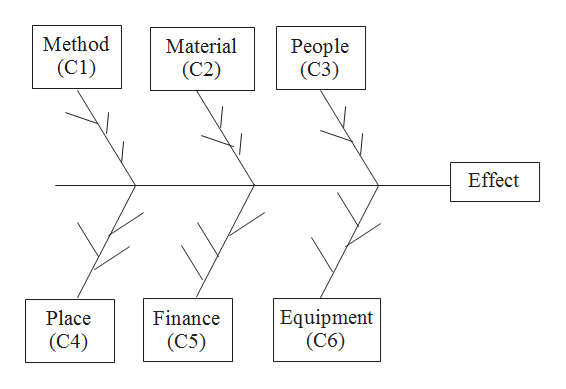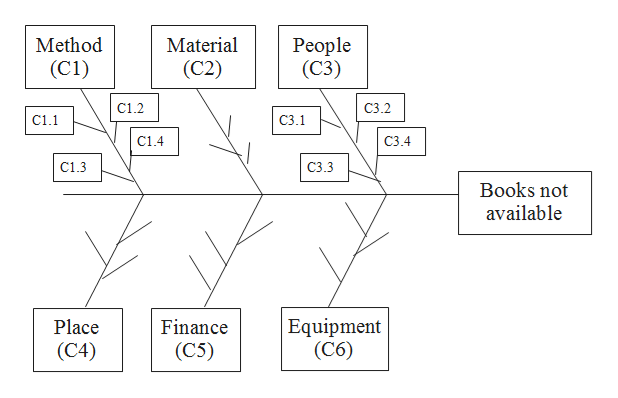College students trying to search for relevant books for a course or reference books for that course often find it unavailable. Prepare a cause-and-effect diagram (fish-bone diagram) for this problem.
College students trying to search for relevant books for a course or reference books for that course often find it unavailable. Prepare a cause-and-effect diagram (fish-bone diagram) for this problem.
Cause-and-effect diagram is also known as fishbone diagram or Ishikawa diagram which helps in organizing problem solving efforts by using a divide-and-conquer approach. The problems are grouped under sub-categories. Typical starting groups are generic in nature such as methods, materials, people, equipment among others. These are not domain specific categories and hence applicable across a wide variety of problem domains. This tool is used in brainstormimg sessions to identify root causes of problems.

Going further along each higher level category we get into domain specific causes. The following is one possible level of subproblems under materials and methods category identified during a brainstorming session:
Method (C1):
- Ineffective process for ordering new books. (C1.1)
- Inefficient process for ordering new books. (C1.2)
- Lack of any process to receive demands from users for new books. (C1.3)
- Lack of coordination with book suppliers to enable adequate purchase lead time. (C1.4)
People (C3):
- Not sufficient man power to process orders for new books. (C3.1)
- Not sufficient man power to process old books for obsolescence. (C3.2)
- Inadequate training to man power to process orders for new books. (C3.3)
- Users not aware of the process to submit demand for new books. (C3.4)
Equipment (C6):
- Lack of adequate automation for receiving demands for new books. (C6.1)
- Lack fo adequate automation for receiving updates from book suppliers and submitting feedback / demand information to the book suppliers. (C6.2)

Trending now
This is a popular solution!
Step by step
Solved in 3 steps with 3 images









